When then-Mayor Richard M. Daley ushered in Chicago’s red-light cameras nearly two decades ago, he said they would help the city curb dangerous driving. “This is all about safety, safety of pedestrians, safety of other drivers, passengers, everyone,” he said.
His successors echoed those sentiments as they expanded camera enforcement. “My goal is only one thing, the safety of our kids,” Rahm Emanuel said in 2011, as he lobbied for the introduction of speed cameras. And in 2020, Lori Lightfoot assured residents her expansion of the program was “about making sure that we keep communities safe.”
But for all of their safety benefits, the hundreds of cameras that dot the city — and generate tens of millions of dollars a year for City Hall — have come at a steep cost for motorists from the city’s Black and Latino neighborhoods. A ProPublica analysis of millions of citations found that households in majority Black and Hispanic ZIP codes received tickets at around twice the rate of those in white areas between 2015 and 2019.
The consequences have been especially punishing in Black neighborhoods, which have been hit with more than half a billion dollars in penalties over the last 15 years, contributing to thousands of vehicle impoundments, driver’s license suspensions and bankruptcies, according to ProPublica’s analysis.
“We felt the brunt of it the way white people didn’t,” said Olatunji Oboi Reed, a longtime activist for racial equity in transportation in Chicago who has received a handful of camera tickets over the years. “Fortunately, I’ve always been in a situation where I can survive financially, unlike many Black and brown people in the city; one ticket is throwing their whole finances in a hurricane.”
The coronavirus pandemic widened the ticketing disparities. Black and Latino workers have been far less likely than others to have jobs that allow them to work remotely, forcing them into their vehicles more often. In 2020, ProPublica found, the ticketing rate for households in majority-Black ZIP codes jumped to more than three times that of households in majority-white areas. For households in majority-Hispanic ZIP codes, there was an increase, but it was much smaller.
Similar racial and income disparities in camera ticketing have been documented elsewhere. In Rochester, New York, officials eliminated the city’s red-light camera program in 2016 in part because motorists from low-income neighborhoods received the most tickets and the financial harm outweighed any safety benefits. Miami ended its program in 2017 amid complaints from low-income residents who felt unfairly burdened by the fines. And in Washington, D.C., racial justice advocates are researching the city’s camera-ticketing program after a local think tank in 2018 and The Washington Post last year found that cameras in Black neighborhoods issued a disproportionate share of tickets there.
Although some cities have eliminated their camera programs, automated enforcement has been gaining support elsewhere in the aftermath of the nation’s racial reckoning following the death of George Floyd in 2020 at the hands of police. From California to Virginia, citizens groups, safety organizations, elected officials and others are pointing to cameras as a “race-neutral” alternative to potentially biased — and, for many Black men, fatal — police traffic stops.
And more funding for cameras may be coming: The federal infrastructure bill passed last fall allows states to spend federal dollars on traffic cameras in work and school zones.
In Chicago, officials have known of disparities since at least April 2020, when a pair of professors at the University of Illinois Chicago shared initial research showing that cameras send the most tickets to predominantly Black ZIP codes. The city then hired them to study the issue further.
Six months later, Lightfoot — who campaigned in part on ending what she called the city’s “addiction” to fines and fees — proposed that Chicago expand camera ticketing by lowering the speeds at which cameras will issue citations. Lightfoot called it a public safety measure, especially in light of a spike in traffic fatalities during the pandemic, but many observers called it a money grab. The City Council approved the measure as part of the 2021 annual budget.
After the change went into effect last March, racial disparities persisted, ProPublica found.
When asked why the city expanded the program despite knowing of the racial disparities, Dan Lurie, Lightfoot’s policy chief, said the administration saw that traffic fatalities were “at epidemic levels” and that was a “deep concern” to the mayor. “We feel strongly,” he said, “that cameras are a tool in the toolkit to help alleviate that.”
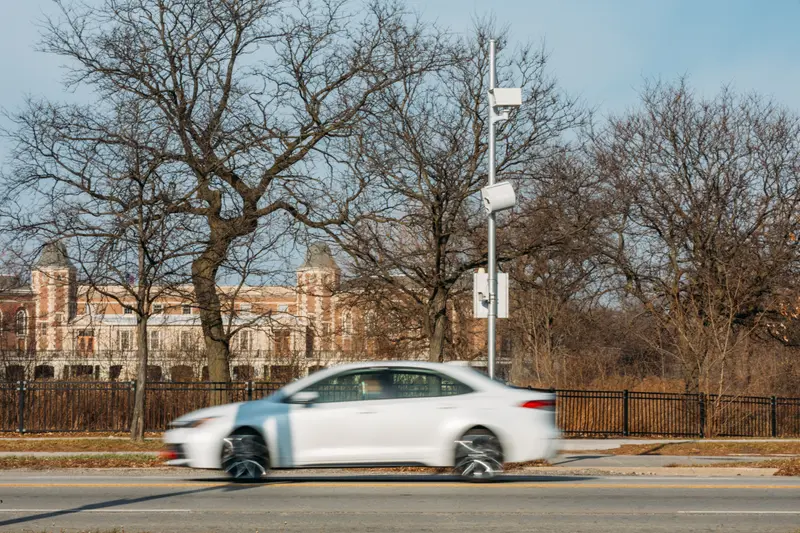
The city is not considering eliminating the cameras or shrinking the program, though Lurie said the administration would “evaluate” cameras at locations where there’s evidence they do not reduce crashes.
A summary of the UIC research provided to ProPublica last week confirmed the racial disparities in red-light and speed-camera ticketing and found that most of the speed cameras improve safety.
City officials said they are trying to mitigate the financial harm caused by camera tickets. They pointed to a pilot program that halves the costs of fines and allows for some debt forgiveness for low-income residents. That initiative, which was announced last year with no mention of the racial inequities baked into the camera program, is scheduled to start by the end of March.
Lurie said the administration has been grappling with the “twin challenges” of improving traffic safety while “very intentionally ensuring that the burdens of fines and fees as a result of those kinds of efforts do not fall disproportionately on Black and brown residents.”
The irony is that some of the factors that contribute to ticketing disparities, such as wider streets and lack of sidewalks in low-income communities of color, also make those neighborhoods more dangerous for pedestrians, cyclists and even motorists. According to a 2017 city report, Black Chicagoans are killed in traffic crashes at twice the rate of white residents.
The city’s latest transportation plan, which has a focus on racial equity, lays out a number of projects, such as improving crosswalks and building more bike lanes. City officials also said they plan to install more flashing signs that show drivers how fast they’re going — devices known to help reduce speeds.
Lurie acknowledged that the best way to reduce traffic fatalities is to fix the underlying road infrastructure that contributes to unsafe driving. That way, he said, “Pedestrians are safer, you’re safer and no one’s getting a fine. That’s the ideal outcome here. We are dealing with, in many ways, after-the-fact consequences of streets that need to be rethought and redesigned.”
Chicago’s automated camera program began in 2003, after a 30-day “experiment” on opposite ends of Western Avenue recorded some 4,500 red-light violations. Over the next decade, the Daley administration installed cameras at dozens of intersections around the city.
Emanuel expanded the program further in 2013 to include speed cameras.
The Lightfoot-era expansion happened, fundamentally, through lowering the speed limit threshold for tickets, not by adding more cameras.
Today, motorists are monitored by cameras at close to 300 locations around the city, making Chicago’s automated traffic enforcement program one of the largest in the country. Both red-light and speed cameras are distributed roughly evenly among the city’s Black, Latino and white neighborhoods.
The cameras capture images of a vehicle’s license plate as well as video of the alleged infraction, which is reviewed by a third-party vendor before a ticket is sent to the vehicle owner.
Each year the city issues approximately 1 million camera tickets, about evenly split between the two types of infractions. In all, cameras have generated more than $1.3 billion in revenue since the first one was installed nearly two decades ago.
In general, research has found that the cameras help reduce serious accidents by changing driver behavior. Northwestern University researchers found in 2017 that the number of T-bone crashes — where one vehicle drives into the side of another — fell after red-light cameras were installed, as fewer people ran red lights. According to the executive summary of the latest research by UIC associate professors Stacey Sutton and Nebiyou Tilahun, speed cameras reduced the expected number of fatal crashes and those leading to severe injury by 15%.
Still, a wide array of observers has criticized the program as a revenue generator more than a public safety solution. Tickets for running a red light or going 11 or more miles per hour over the limit cost $100; with late penalties that figure can grow to $244. Citations for driving between 6 and 10 mph over the limit cost $35, an amount that increases to $85 when late.
Almost half of the tickets received by low-income residents end up incurring additional penalties, according to the research by Sutton and Tilahun, both of whom are in UIC’s College of Urban Planning and Public Affairs. For upper-income residents, 17% of tickets end up with additional fees.
Over the years, many residents have protested that the camera tickets hurt poor people who struggle to pay the fines in time to avoid hefty late penalties and collections fees.
The issue became a priority for Reed, who leads the nonprofit Equiticity, an advocacy and research organization focused on transportation equity, when he saw how much the city relied on enforcement as a strategy to help eliminate traffic fatalities in the Vision Zero Chicago plan published in June 2017.
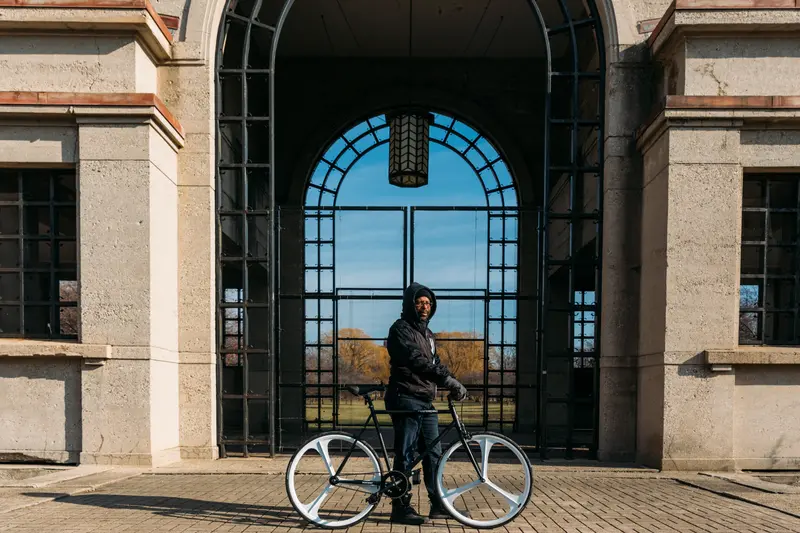
He has for years called on the city to stop ticketing cyclists in Black and Latino neighborhoods for riding on sidewalks and to instead improve infrastructure in those areas. He is keenly aware that people of color are disproportionately killed in traffic accidents in Chicago and across the country. But he says he doesn’t think the city can ticket its way to safer streets.
At a September 2017 meeting, Reed and others asked city transportation officials to identify and eliminate any racial or geographic disparities in camera ticketing, emails show. The city never committed, Reed said.
“We didn’t subscribe to this notion that the answer to improved traffic safety is a punitive approach,” he said. “The root cause of traffic violence in our society that is disproportionately impacting Black and brown people is structural racism.”
The following February, ProPublica reported on how debt from parking and camera tickets disproportionately piled up in Chicago’s Black neighborhoods, sending tens of thousands of people into bankruptcy. The reporting has prompted significant reforms across the state.
This is the first time ProPublica has examined the disparities in camera ticketing itself, not just the financial consequences. The analysis relies on information obtained through public records requests from the city’s ticket database, including the ZIP code associated with the vehicle registration for every camera ticket issued since the program’s birth in 2003 through mid-2021.
ProPublica’s main analysis relies on ticketing from 2015 through 2019 to correspond with the most recent five-year census survey data. Ticketing rates were calculated based on the number of households in each ZIP code, as there is no available and reliable measure of motorists or vehicles by ZIP codes that covers that period.
The data shows how motorists from Black and Latino areas of the city have consistently received a higher share of camera tickets. The disparity persists when you include motorists who live anywhere in Cook County but drive in the city or if you include speed warnings to first-time violators. ProPublica excluded warnings from its main analysis because they carry no financial penalties.
Between 2015 and 2019, some 3.1 million camera tickets went to Chicago residents. The highest share, or about 38%, of those tickets went to motorists from majority-Black ZIP codes. By comparison, those ZIP codes account for 27% of households.
The disparity is less severe in majority-Hispanic ZIP codes, which account for 19% of tickets and 16% of households.
Households in the city’s majority Black ZIP codes received about four citations per household over that time period. That’s more than twice the rate for households in majority-white ZIP codes, which received fewer than two tickets. Households in Hispanic ZIP codes received more than three tickets per household during the same time period.
For their study, which relies on census-tract level ticket data, Sutton and Tilahun looked at a shorter time period, 2016 through 2019, and arrived at a similar conclusion.
Rodney Perry has been caught in the cycle of ticketing. The 28-year-old entrepreneur quit his job at a logistics firm last spring to build a digital marketing and production company. The work leads him to drive past the city’s cameras more than he did in his previous job. Last year, Perry received three tickets for running red lights and eight for speeding. Of the speeding tickets, five were for going just 6 or 7 mph over the limit — speeds that would not have triggered a ticket before Lightfoot lowered the threshold for tickets.
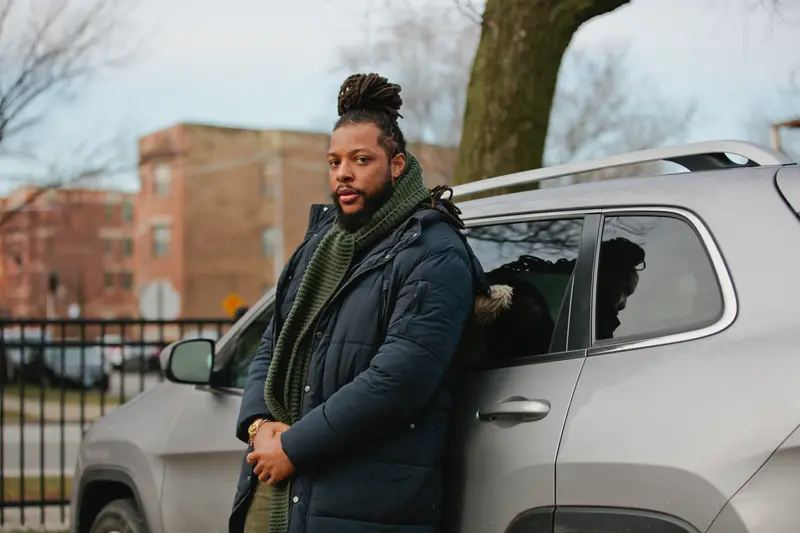
He paid some off, but the penalties eventually added up to more than $700, money he said he did not have. He tried to get on a city payment plan but said he couldn’t figure out how to do that online. Because of the unpaid tickets, the city in November immobilized his 2018 Jeep Cherokee with a yellow Denver boot clamped over one of the front wheels outside his apartment. Perry had to borrow money from his older sister in Tennessee to get on a payment plan and get the boot removed, a process that came with yet more fines.
“Family doesn’t ever want to see you have any moment of struggle,” said Perry, who took on an extra job at a restaurant to help pay off the tickets and make ends meet. “It’s a financial impact, but mentally it’s where I was affected the most. Mentally and emotionally.”
Perry said he takes responsibility for getting tickets. But he can’t help but notice something every time he drives through majority-Black neighborhoods: There are fewer pedestrians and more vacant lots and industrial areas.
“It’s almost like you feel like there is nothing there. Nothing to slow you down,” he said.
When Perry enters more densely populated Latino neighborhoods, he sees bustling commerce and more pedestrians. And in majority white neighborhoods, there are even more pedestrians and “a stop light every few blocks. A stop sign between those. Crosswalks,” he said. “There’s a million reasons to stop once you pass downtown on the North Side.”
It all makes him wonder: Does the way a neighborhood looks affect whether a driver will get a ticket?
Consider the speed camera on West 127th Street, a few blocks east of South Halsted Street in West Pullman, a majority-Black neighborhood on the city’s Far South Side.
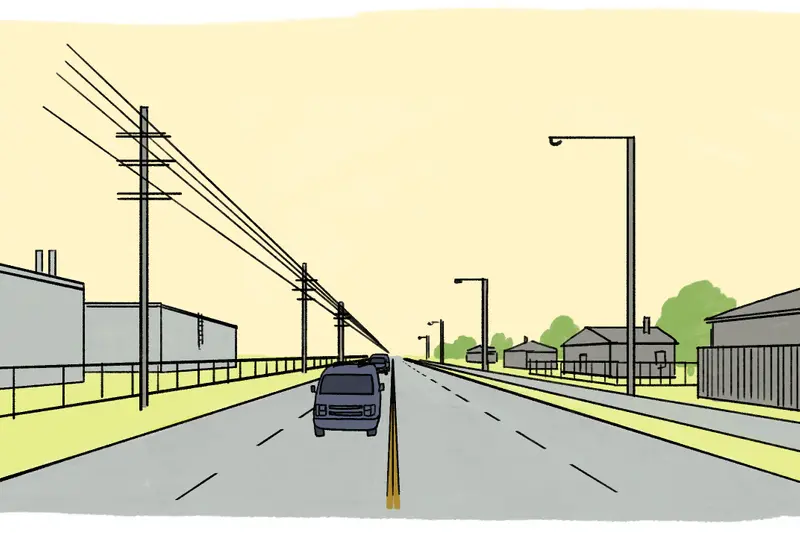
The camera sits next to a fenced-in steel plant, overlooking a busy, four-lane stretch of road where the speed limit is 30 mph. What allowed the city to place a camera there — as speed cameras are only allowed near parks or schools — is a bike trail that cuts across the street a little west of the device. It’s not a frequently used path; on a bright October morning, not one cyclist passed through in the half hour or so a pair of reporters observed the trail. No pedestrians walked along that stretch of West 127th Street, either; only one side of the street even has a sidewalk.
Meanwhile, dozens of semitrucks and passenger vehicles roared past.
About 20 miles north, another camera stands along a two-lane stretch of West Montrose Avenue that borders Horner Park in the whiter, more affluent Irving Park neighborhood.
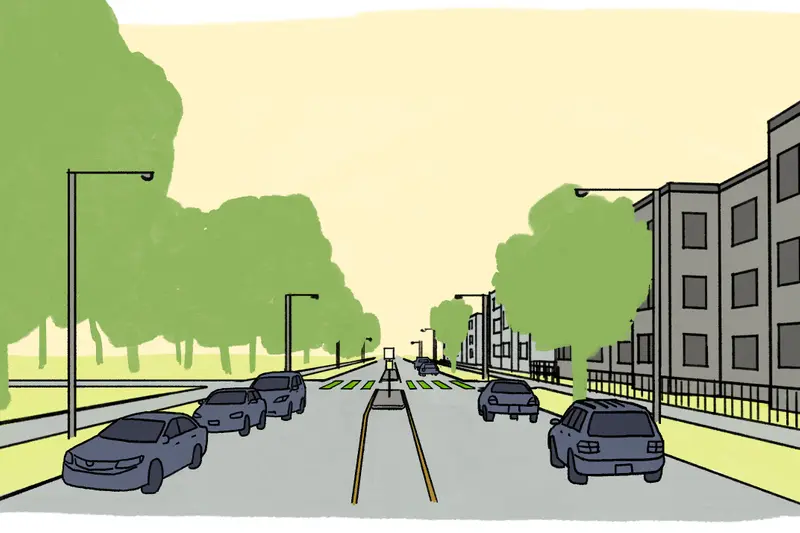
Here, the speed limit is also 30 mph. Drivers have to slow down to maneuver around a concrete pedestrian island and over bright green and white crosswalks that lead into the park. That same October morning, reporters encountered more than a dozen pedestrians, cyclists, dog walkers and others near the camera in about a half hour.
In 2020, the camera on West 127th Street issued 22,389 tickets to motorists caught driving 11 mph or more over the speed limit, each costing $100.
The one on West Montrose Avenue? Five.
Drivers intuitively slow down when confronted with narrowed streets, speed bumps or other traffic, said Jesus Barajas, an assistant professor in the Department of Environmental Science and Policy at the University of California Davis, who has studied transportation and infrastructure in Chicago. Wide roads without what are often called calming measures, like the ones on West Montrose Avenue, encourage speeding.
“If it feels like a highway, you’re going to go 50,” Barajas said.
ProPublica found that all 10 locations with the speed cameras that issued the most tickets for going 11 mph or more over the limit from 2015 through 2019 are on four-lane roads. Six of those locations are in majority Black census tracts.
Meanwhile, eight of the 10 locations where the fewest tickets were issued are on two-lane streets. And just two of the 10 are in majority Black census tracts. (The analysis focused on cameras near parks, because those devices operate for more hours and days than those by schools, leading them to issue the vast majority of tickets.)
Residential density is another factor. Denser neighborhoods have more cars, more traffic and more pedestrians, all factors that cause motorists to intuitively slow down, experts said.
And in Chicago, which has seen an exodus of Black residents in recent decades, Black neighborhoods are far less dense than their white counterparts.
ProPublica found that the 10 locations with speed cameras that issued the most tickets were in census tracts with about 6,400 people per square mile, on average. By comparison, the 10 locations with speed cameras that issued the fewest tickets were in tracts that, on average, were more than twice as dense.
Another factor in ticketing: proximity to expressways, which decades ago were built over Black communities in Chicago and across the nation. Seven of the 10 intersections with red-light cameras that issued the most tickets are within a block of an expressway entrance. Six of the 10 are in majority Black census tracts. None of the 10 intersections where red-light cameras issued the fewest tickets are near expressways, and just one is in a majority Black tract.
Sutton and Tilahun also found that ticketing levels are highest among red-light cameras located within 350 feet of freeways, and that Black neighborhoods account for a disproportionate share of all cameras near freeways, according to the executive summary of their paper.
The UIC researchers also found that red-light cameras in areas where there were high rates of violent crime issued more tickets. “Perhaps people drive differently in those areas,” Tilahun said. “They might rush through intersections because they feel unsafe.”
Census estimates show that Black residents are about as likely to drive to work as white residents, though they face longer commutes no matter how they get to work, according to a study by the Chicago Metropolitan Agency for Planning, which works on planning issues in northeastern Illinois.
Low-income Black neighborhoods often lack basic amenities such as grocery stores, pharmacies and hospitals, forcing drivers into their cars for longer periods of time, said Alejo Alvarado, a transportation planner who has written about how replacing traffic stops with speed cameras could disproportionately hurt low-income and minority drivers in Oakland, California.
“There’s usually not retail investment or housing investment, so a lot of these communities, they’re food deserts. They don’t have the amenities they need,” Alvarado said. “I can’t just walk down the street to get my groceries; I’ve got to drive somewhere else.”
When Lightfoot was running for office in 2019, she promised to reform the city’s system of ticketing and debt collection. “We cannot accept a system that has such a devastating impact on low-income people and people of color,” she said.
The mayor has made good on her promise. The city ended a long-standing practice of seeking driver’s license suspensions for unpaid parking tickets, and state lawmakers ended suspensions for any kind of ticket debt, including for unpaid camera tickets. The city has also made ticket payment plans more accessible; it used to be cheaper for motorists with a lot of ticket debt to file for bankruptcy than to get on a payment plan with the city.
So when Lightfoot proposed an expansion of the city’s speed-camera program in October 2020, potentially sending tens of thousands of new tickets to the same populations already overburdened by fines and fees, it was widely seen as hypocritical. She was even criticized by some of the transportation safety advocates who support camera enforcement, including the influential Active Transportation Alliance.
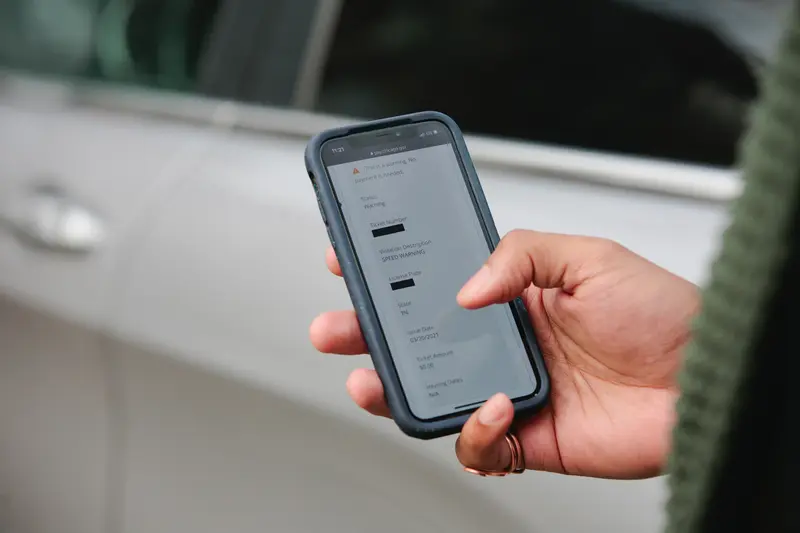
Though the mayor made an argument for traffic safety, alliance spokesperson Kyle Whitehead said his group suspected the proposal was more about revenue given it was made in the context of the city budget. What’s more, he said, the change would be “exposing more people to tickets without really understanding the racial equity impact of that change.”
But Chicago officials did understand. When Lightfoot proposed the expansion, the city already had Sutton and Tilahun’s preliminary findings. Sutton was dismayed to learn of the expansion.
“There’s a disconnect between the data and the politics, the evidence and politics,” Sutton said of the change. “It doesn’t align with the huge burdens that we see in the data.”
Lurie defended the mayor’s decision to expand the program even though the city had evidence of its disparate impact on communities of color. Lightfoot, he said, was particularly motivated after a decade-high spike in traffic fatalities in 2020.
“If someone is a reckless driver, that is a fundamental concern to the mayor,” Lurie said. “That fine and fee, we believe, can help change behavior. That fine and fee should not put someone in a place where they are unable to pay it, where they are making choices about whether they could put food on the table instead of paying that fine or fee.”
The impact of lowering the speed limit threshold was huge. In 2021, the city issued more than 1.4 million tickets to motorists going 6 to 10 mph over the limit, more citations of that kind than it had issued in the combined previous eight years of the program’s existence. The tickets, if paid, had the potential to bring in some $50 million in revenue.
But not everybody can pay their tickets, and the debt can upend lives. Late payments can lead to a boot being placed on a car, which might mean days away from work, making it harder to catch up with the debt. While unpaid tickets may no longer result in a license suspension, it’s easy for Chicagoans to get caught in the cycle.
“We end up fixing something and creating a different kind of harm,” said Priya Sarathy Jones, the national policy and campaigns director at the Fines and Fees Justice Center, which sees cameras playing a larger role in cities’ efforts to prevent traffic fatalities. “It removes police from having contact with predominantly Black men and Black people, but you’re also creating an entirely parallel universe of harm.”
Sutton, who has long studied the impact of “race neutral” policies on communities of color, said Chicago’s experience should be a cautionary tale for cities considering camera programs.
“It’s the same cycle, right, in terms of their interaction with the state and with the justice system,” Sutton said. “But the way you enter that is not through a police officer, but through this supposedly unbiased technology. … I don’t think there’s a technological fix to an unjust system.”
ProPublica data reporter Haru Coryne reviewed the code and analysis. Road illustrations by Laila Milevski/ProPublica.











